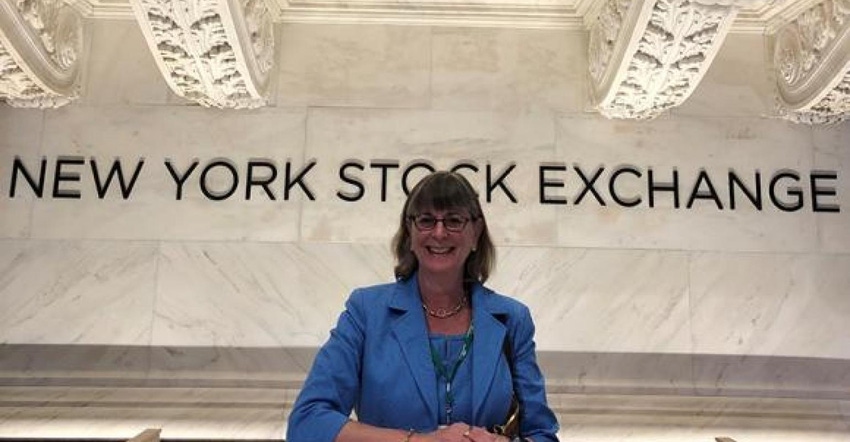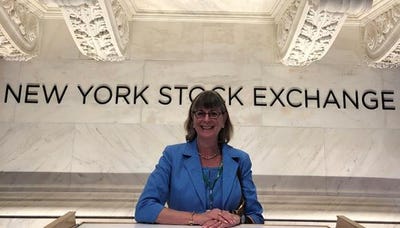
GFL Environmental (GFL), which went public in the early days of the pandemic, had a very eventful summer, announcing two large and transformative acquisitions. In this edition of Business Report, we recap GFL’s recent actions and look at its future opportunities.
Recapping the Transactions
On June 24, GFL announced that it had entered into a definitive agreement to acquire basically all of the divestiture assets expected to result from the previously announced acquisition of Advanced Disposal Services (ADS) by Waste Management (WM). The assets, which represent a portfolio of vertically integrated US solid waste operations, are expected to generate annualized revenue of more than $345 million. The purchase price of $863.5 million was estimated to equate to a purchase multiple of ~9x the underlying EBITDA, which was estimated to be more than $95 million, implying a margin in the neighborhood of 27%-28%.
In short order, on August 12, GFL announced that it entered into a definitive agreement to acquire privately-held WCA Waste Corporation (WCA) for $1.212 billion, in part, financed by a private placement with HPS Investment Partners of $600 million. WCA’s annual revenue is estimated to be around $400 million and its EBITDA around $105 million, implying a margin 26+%. Given that, the purchase multiple was estimated to be around 11.5x. Underpinning the financing of both transactions was an upsized offering of $750 million in senior notes announced August 17, though management also noted that a major reason that GFL came public when it did was to facilitate these two deals that management had been either contemplating or working on for over a year. Post both deals closing, GFL’s leverage (its debt to EBITDA ratio) is expected to be around 4.62x, which is closely tracked by analysts and investors alike.
Updated Timing
The WCA acquisition sailed through the Department of Justice’s HSR approval process with no required divestitures (as expected), and GFL was able to announce the close of the transaction on October 1, roughly a month earlier than many observers had expected. On the other hand, WM reported in a recent 8-K filing that it now expects the ADS transaction to occur early in the fourth quarter, as opposed to late in the third quarter. Merger and Acquisition (M&A) industry sources are typically assuming closure around mid-October, thus a bit later than GFL initially anticipated when it announced the intent to purchase the divestitures from the WM-ADS transaction.
Expanding the Geographic Reach and its Landfill Asset Positioning
With the acquisition of the WM-ADS divestitures, GFL will be acquiring substantial and integrated Wisconsin assets, estimated to represent 60+% of the acquired EBITDA, which will represent a new market platform for GFL. Some of the remaining assets located in Michigan, Georgia, Alabama and Pennsylvania can and will be tucked into existing GFL operations. The assets also include 18 landfills (though several are short-lived), and over 80% of the acquired hauling revenue is commercial. GFL previously operated 45 landfills as of the end of 2019. According to GFL, synergies are expected to be $10-$12 million over the next 12-18 months.
With the just completed acquisition of WCA, as evidenced by the swift HSR approval and no required divestitures, GFL will be largely entering into new market areas. The minimal overlap, which can sometimes cause integration issues, is expected to be mitigated by the fact that GFL and WCA use largely the same underlying operating platforms. WCA brings a sizable presence in three key geographic markets—Texas, Missouri and Florida--which account for just over 80% of WCA’s revenue. WCA also brings another 22 landfills to the mix of business. Pro forma for both transactions, GFL will control 85 landfills. With the WCA purchase and the pending WM-ADS deal, GFL will be in 27 US states and has thus emerged as a national player. Similar to the WM-ADS transaction, synergies of around $10 million are expected.
As the assets expected to be purchased from WM-ADS are heavily weighted to both commercial on the collection side and landfills (and WCA adds another 22 landfills as previously mentioned), both transactions are expected to enhance GFL’s margins—it had previously operated under what was often characterized as a “landfill light” model.
2020 Guidance and Pro Forma Outlook—What Does it Mean for the Numbers?
In conjunction with the announcement of the WCA purchase, GFL issued 2020 guidance of (in Canadian dollars) $4.04-$4.08 billion in revenue, adjusted EBITDA of $1.04-$1.06 billion, cash flow from operating activities of $730-$750 million and second half 2020 free cash flow (FCF) of $318-$328 million. This compares to 2019 actual results of $3.35 billion in revenues, $826 million in adjusted EBITDA and cash provided by operations of $251 million.
Given the combination of the purchase multiple paid and the margin enhancing assets acquired, both transactions are expected to be immediately accretive to EBITDA and cash flow. In the follow-up conference call to the initial WCA announcement, management noted that the 2020 outlook plus the estimated annual contribution from the WM-ADS and WCA purchases results in an annual run rate EBITDA of $1.340 billion and expected annual capital expenditures of $480 million. For 2021, though admittedly in a relatively wide range, analysts’ pro forma estimates are coalescing around $5.225-$5.575 billion in revenues, $1.375-$1.475 billion in EBITDA and around $525-$595 million in FCF, which encapsulates the addition of the two acquisitions. This represents growth in revenue and EBITDA of 55+% and 65+%, respectively, from 2019 actual levels. Pro forma estimated leverage is expected to be around 4.62x when both transactions are completed.
Where Does GFL Go from Here?
Management stressed that the future focus would be on integrating the two deals, improving internal operating metrics and optimizing the pricing structure, with no other large transactions in their sights at the present time. Analysts generally foresee longer-term organic growth in the mid-single-digits (with the majority of that stemming from price), further margin enhancement potential and better free cash flow conversion. That doesn’t mean that GFL management is done acquiring companies, however! Given this vastly expanded geographic platform, there is now a lot of “white space” on the map, and thus, the potential for a significant number of accretive, but smaller, tuck-ins. Management is forecasting 25-30 of those per year, but in a $1-$10 million annual EBITDA range more typically. Given the accretive nature and often lower purchase multiple of those type of transactions, the company is expected to gradually de-lever over time, at roughly half a turn per year, to get it back to a leverage ratio of 4.0x or less.
Short Seller Report
GFL also had some unwanted news in the form of a short seller report issued in the latter part of August by Spruce Point Capital. Although management, the GFL Board, and industry analysts refuted and pushed back against the report, the closure of WCA and what looks to be the relatively near term closure of the WM-ADS transaction certainly puts to bed one of the short seller’s claims, which was that the deals would not pass muster with the Department of Justice!
About the Author(s)
You May Also Like




